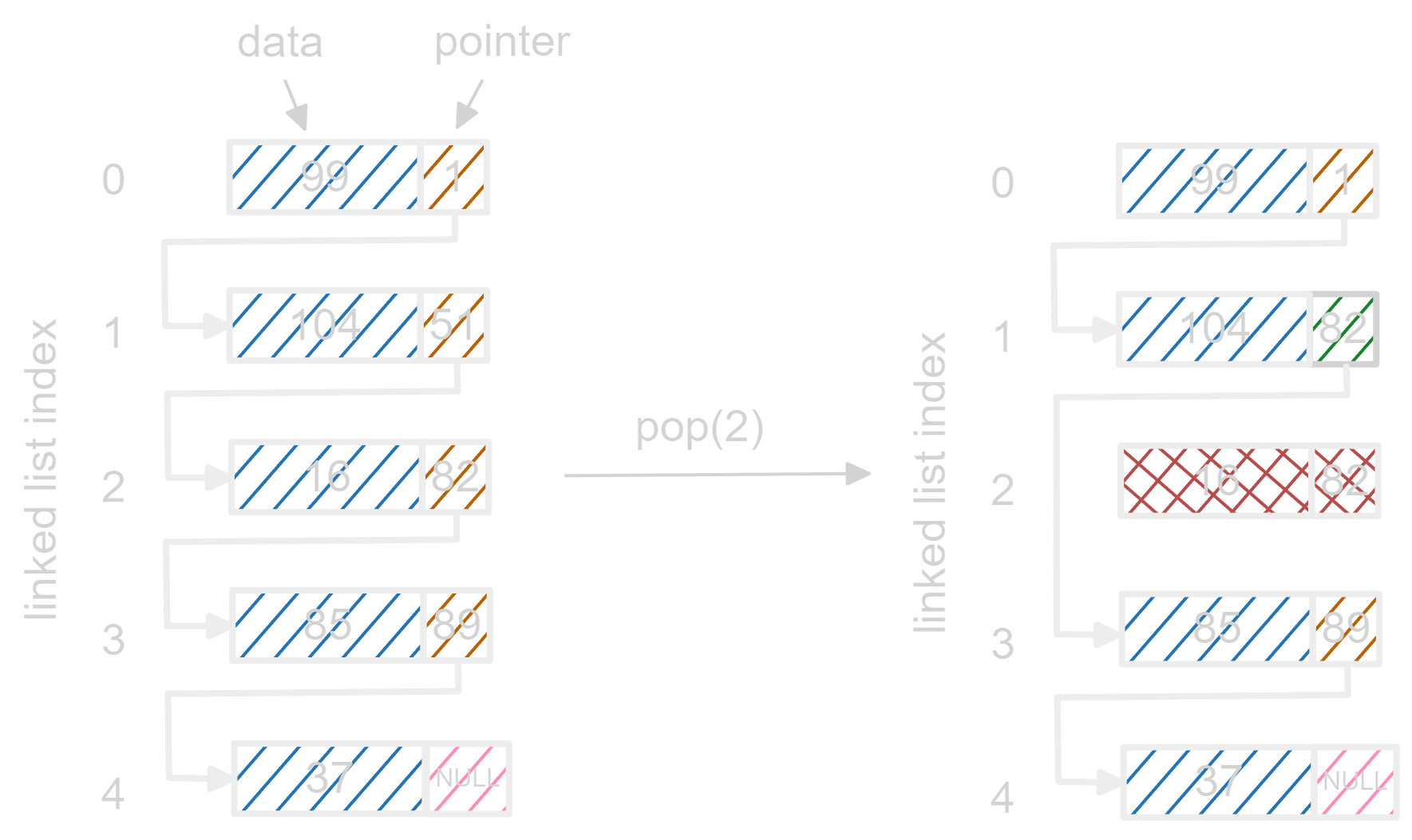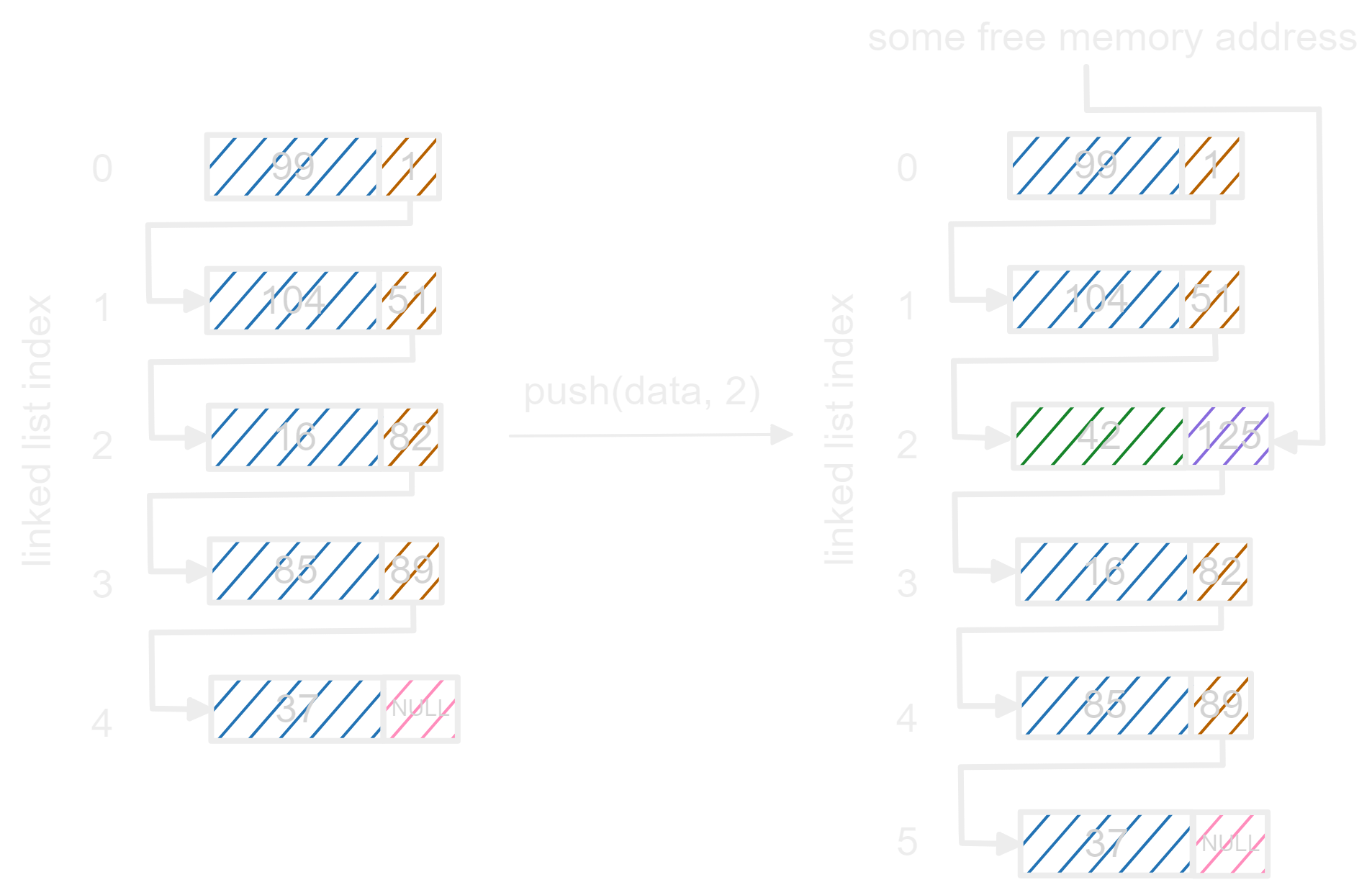Linked List
Not to be confused with a List as these are often arrays with a wrapper for fast dynamic resizing.
A Linked List is a set of nodes where each node only points to the memory address of the next element on the list.
Using Linked Lists
In most cases using List<T> in a range of languages will be fairly similar if you aren't adding or removing many elements. However, the benefits of using LinkedList<T> or equivalent in your language are that they drastically speed up functions which require adding or removing many elements in a short amount of time, especially since their push and pop times are
If your language doesn't support an implementation of linked lists by default you can add it yourself by following the step below.
Node Class
A fairly simple implementation for a structure like a linked list might look like the following:
class Node:
def __init__(self, data, next_node=None):
self.data = data
self.next_node = next_node
def set_next_node(self, next_node):
self.next_node = next_node
def get_next_node(self):
return self.next_node
def get_data(self):
return self.data
This implementation allows you to have a node that only points to the next node in the linked list.
Linking Nodes
This can be done by creating an instance of the node and assigning data to the node.
node1 = Node(1)
node2 = Node(2)
node3 = Node(3)
Then we need to link node1 to node2 and node2 to node3.
node1.set_next_node(node2)
node2.set_next_node(node3)
Traversing the Linked List
To traverse the linked list and print the values, you can start at node1 and follow the next_node references:
current_node = node1
while current_node:
print(current_node.get_value())
current_node = current_node.get_next_node()
1
2
3
Linked Lists in Memory

